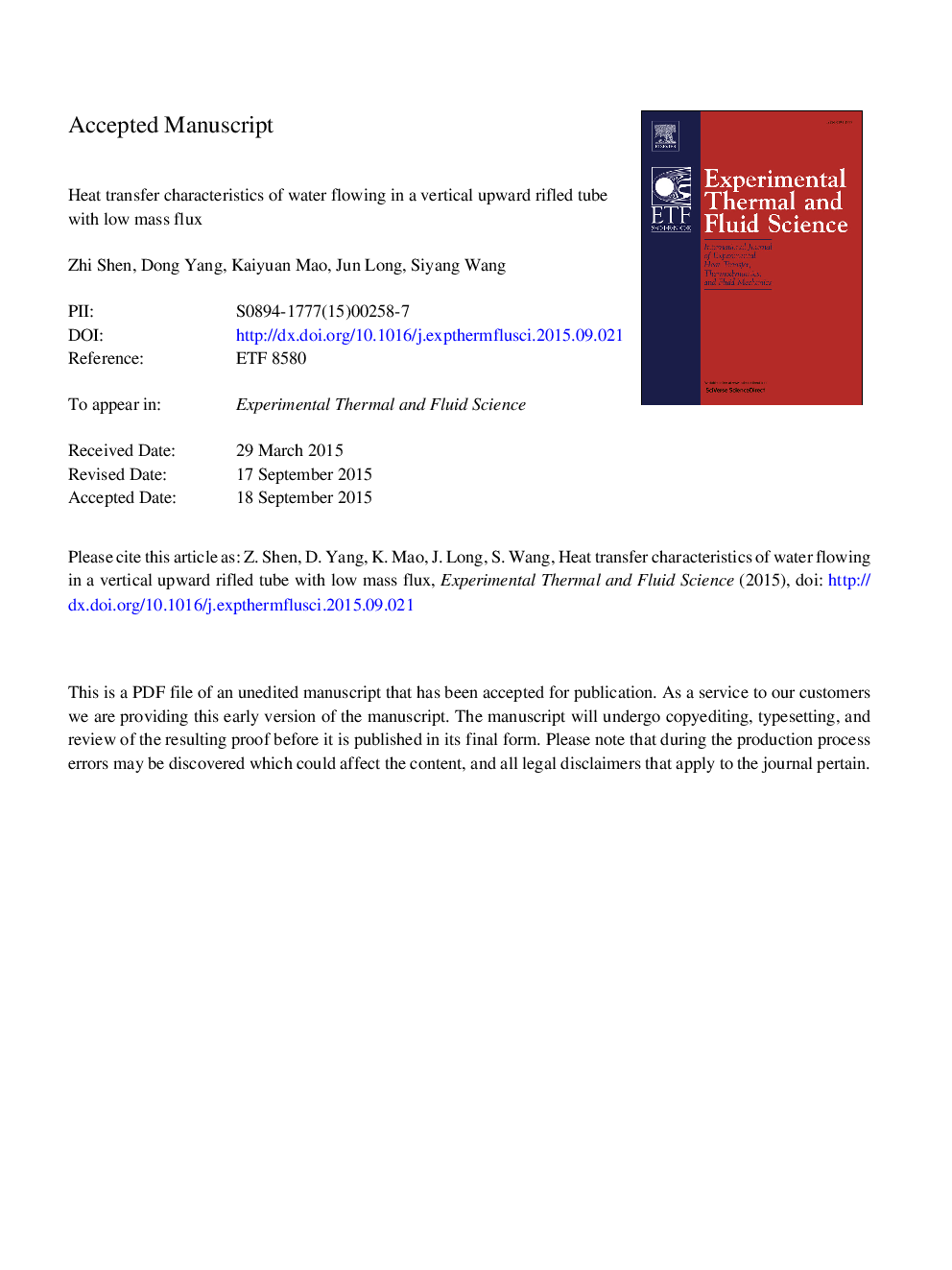| Article ID | Journal | Published Year | Pages | File Type |
|---|---|---|---|---|
| 7052094 | Experimental Thermal and Fluid Science | 2016 | 45 Pages |
Abstract
This paper presents an experimental investigation on heat transfer characteristics of water flowing upward in a 2-m long vertical rifled tube with an hydraulic diameter of 19.1 mm. The experiment was conducted at pressures ranged from 11 to 32 MPa, values of mass flux from 170 to 800 kg mâ2 sâ1 and heat fluxes up to 600 kW mâ2. The results show that at subcritical pressures, dryout occurs at high vapor qualities and is delayed by decreasing heat flux. The influence of mass flux on the onset of dryout is non-monotonic. Compared to smooth tube, rifled tube can effectively prevent the occurrence of departure from nucleate boiling (DNB). Whereas, at near-critical pressures, the enhancement disappears and DNB even occurs in sub-cooling region. But the peak wall temperature is remarkably reduced. Based on the experimental data, correlations were obtained to predict heat transfer in single-phase, two-phase and post-dryout regions. At supercritical pressures, heat transfer is enhanced within the pseudo-critical region due to drastic variations of thermo-physical properties. Both buoyancy and flow acceleration have little effect on heat transfer. Five heat transfer correlations were evaluated with the experimental data divided into forced convection and mixed convection. The Mokry et al. correlation shows the best performance in predicting heat transfer with forced convection and the Jackson correlation gives the best prediction in mixed convection region.
Related Topics
Physical Sciences and Engineering
Chemical Engineering
Fluid Flow and Transfer Processes
Authors
Zhi Shen, Dong Yang, Kaiyuan Mao, Jun Long, Siyang Wang,
